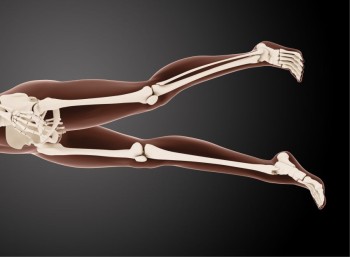
RGU X-ray, a vital component of urological imaging, plays a crucial role in assessing the urinary tract and related structures.
RGU X-ray with Cost
RGU X-ray in Detail
Introduction
RGU X-ray, a vital component of urological imaging, plays a crucial role in assessing the urinary tract and related structures. This detailed examination provides valuable insights into the functioning and potential abnormalities within the bladder and urethra.
History of RGU X-ray
The history of RGU X-ray is marked by continuous advancements in urological imaging technology. From its early days to the present, the technique has undergone significant evolution, enhancing its diagnostic capabilities for urinary tract assessments.
Purpose of RGU X-ray
The primary purpose of RGU X-ray is to detect abnormalities in the urinary tract. It proves particularly effective in evaluating bladder conditions and urethral structures, providing essential information for urological interventions.
Types of RGU X-rays
RGU X-rays come in various types, each tailored to examine specific aspects of the urinary tract. Retrograde Cystourethrogram (RCU) focuses on assessing the bladder and urethra, while Voiding Cystourethrogram (VCU) provides insights into bladder function during voiding.
Procedure of RGU X-ray
Before undergoing an RGU X-ray, patients undergo specific preparations to ensure optimal imaging results. The procedure involves the careful administration of contrast agents followed by detailed imaging to visualize the internal structures of the urinary tract.
Indications and Contraindications
RGU X-ray is recommended in cases where abnormalities or issues related to the urinary tract are suspected. However, healthcare providers may avoid the procedure in certain instances, such as during pregnancy or when alternative diagnostic methods are more suitable.
Risks and Safety Measures
While generally safe, RGU X-ray does carry some inherent risks, including exposure to ionizing radiation and potential allergic reactions to contrast agents. Healthcare professionals take necessary precautions, such as using minimal radiation doses, to minimize these risks and ensure patient safety.
Interpreting RGU X-ray
Results
Interpreting RGU X-ray results requires a thorough understanding of normal and abnormal findings within the urinary tract. Healthcare professionals analyze the images to identify any structural or functional abnormalities that may impact a patient's urological health.
Comparison with Other Urological Diagnostic Techniques
Comparing RGU X-ray with alternative diagnostic methods, such as ultrasound or CT scans, highlights the unique advantages and limitations of each approach. Understanding these differences assists medical professionals in choosing the most suitable imaging technique for specific urological assessments.
Case Studies
Real-life case studies provide tangible examples of how RGU X-ray has played a pivotal role in diagnosing and treating various urological conditions. These cases illustrate the practical application and success of the imaging technique in diverse urological scenarios.
Technological
Advancements in RGU X-ray
Recent advancements in urological imaging technology have significantly improved RGU X-ray, making it more efficient and patient-friendly. Innovations in equipment contribute to enhanced accuracy and efficiency, providing valuable information for urological diagnoses and interventions.
Common Misconceptions about RGU X-ray
Addressing common myths and misconceptions surrounding RGU X-ray is crucial for fostering confidence in individuals scheduled for the procedure. Clearing up misunderstandings ensures informed decision-making and reduces anxiety associated with urological imaging.
Future Trends and Developments
As technology continues to advance, the future of RGU X-ray holds promising possibilities. Emerging trends hint at increased diagnostic accuracy, reduced invasiveness, and enhanced patient comfort in urological imaging, paving the way for more personalized urological care.
Patient Experiences and
Testimonials
Personal stories from individuals who have undergone RGU X-ray provide valuable insights into the real-world impact of the procedure. These testimonials offer a human perspective on the patient experience and its role in their urological journey.
Conclusion
In conclusion, RGU X-ray emerges as a vital tool in urological diagnostics, providing essential information for healthcare professionals and urologists. Its rich history, diverse applications, and ongoing technological improvements make it an indispensable component of modern urological imaging.
FAQs (Frequently Asked Questions) about RGU X-ray
Can RGU X-ray detect kidney abnormalities?
While RGU X-ray primarily focuses on the bladder and urethra, it can provide some information about the upper urinary tract, including potential abnormalities in the kidneys.
Is RGU X-ray suitable for diagnosing urinary incontinence?
RGU X-ray may not be the primary method for diagnosing urinary incontinence, but it can contribute to the overall assessment of the urinary tract, helping identify potential causes.
Are there any dietary restrictions before undergoing RGU X-ray?
Specific dietary restrictions may not be necessary for RGU X-ray. However, patients should follow any pre-procedure instructions provided by their healthcare provider.
How long does an RGU X-ray procedure typically take?
The duration of an RGU X-ray procedure varies but generally takes around 30 to 60 minutes, depending on the complexity of the case and the specific type of RGU X-ray being performed.
Can RGU X-ray be repeated for ongoing urological monitoring?
Yes, RGU X-ray can be repeated as needed for ongoing monitoring of urological conditions. The frequency of repeat scans is determined by the healthcare provider based on the patient's individual circumstances.
Is RGU X-ray safe during pregnancy?
While RGU X-ray may be considered safe with precautions, it is generally avoided during pregnancy unless absolutely necessary, as the developing fetus is sensitive to radiation.
Can RGU X-ray detect urinary stones?
Yes, RGU X-ray is effective in detecting urinary stones within the urinary tract, providing crucial information about their size, location, and potential impact on urological health.
What is the preparation process for an RGU X-ray?
Preparation for RGU X-ray typically involves fasting for a few hours before the procedure, and patients may be asked to empty their bladder before the test to enhance imaging clarity.
Can RGU X-ray be performed on pediatric patients?
Yes, RGU X-ray can be adapted for pediatric patients when necessary. Healthcare providers may adjust the procedure to suit the unique needs of children while ensuring their safety.
(0)
Login to continue



